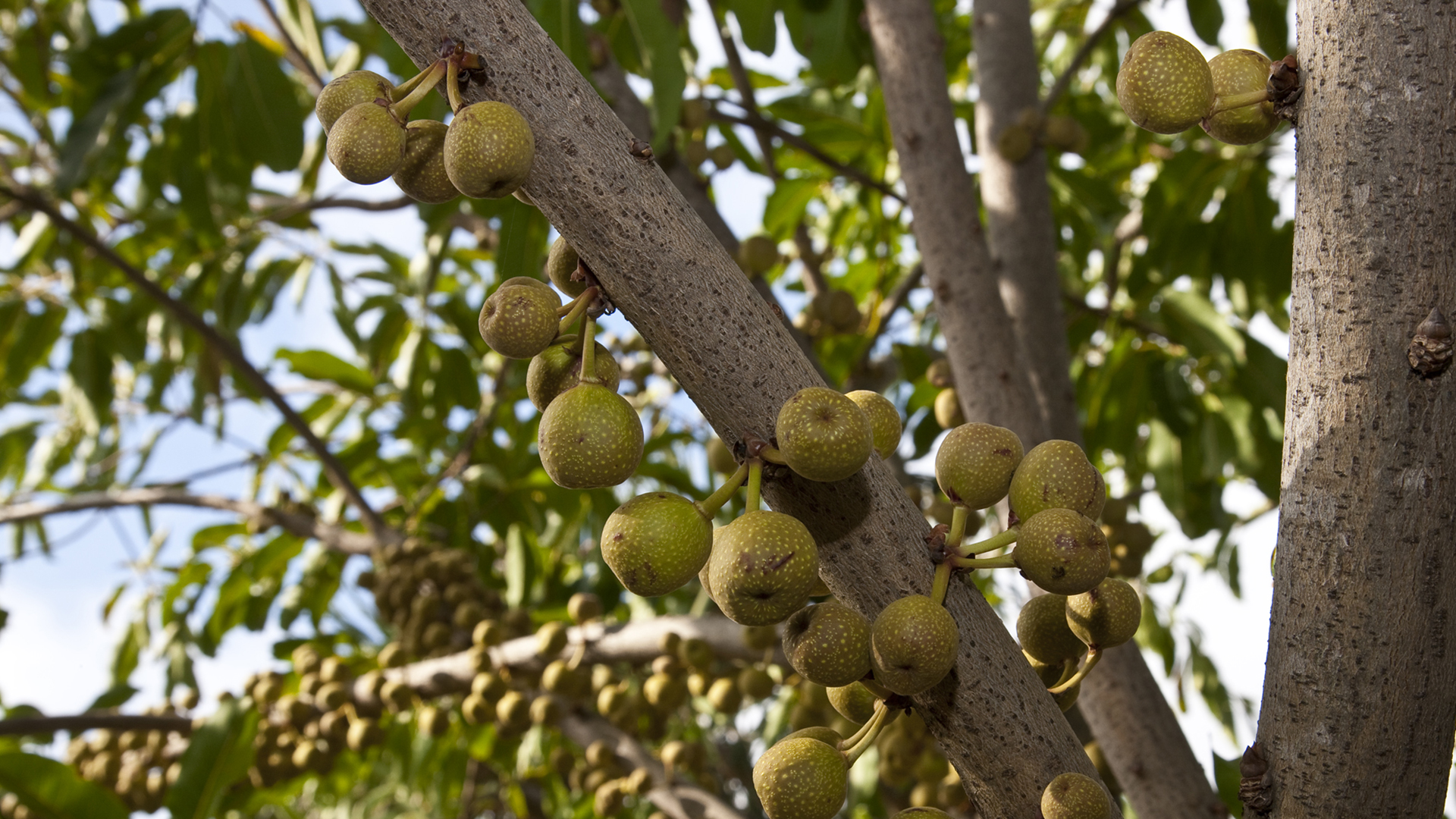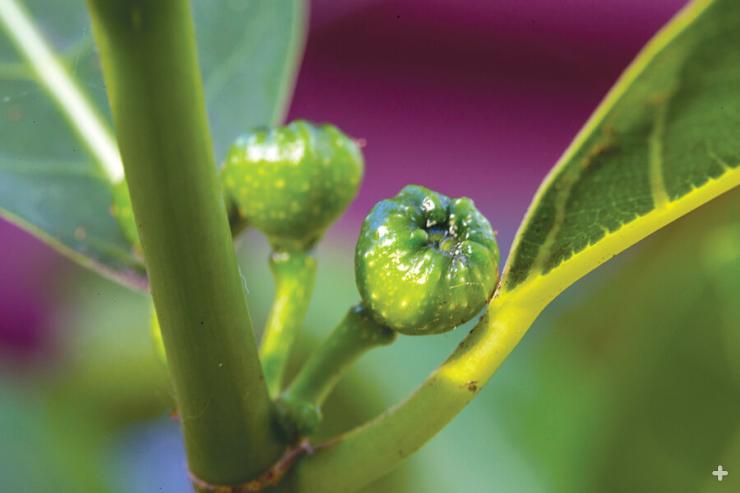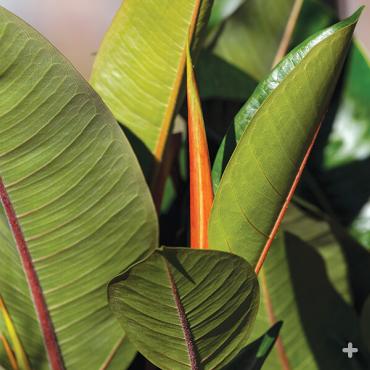
Ficus (Fig)

- DIVISION: Tracheophyta (vascular plants)
- CLASS: Magnoliopsida (dicotyledons)
- ORDER: Urticales
- FAMILY: Moraceae
- GENUS: Ficus
- SPECIES: More than 800

OVERVIEW
The genus Ficus includes hundreds of species of trees, shrubs, and vines that can be found around the world, mostly in tropical and subtropical regions. Some species are lithophytes (plants that grow on rocks). Many are epiphytes (plants that grow on other plants), and in fact many ficus species start out that way. These strangler figs germinate in treetops and develop serpentine aerial roots that completely engulf their host.
Many animals, including apes, elephants, rhinos, tapirs, and giraffes, enjoy ficus browse. In fact, the Zoo's many species of ficus provide 2.5 tons (2.3 tonnes) of animal browse each month. And that's just small potatoes, compared to the natural world. Throughout the Earth's tropics, ficus provide food and habitat for a rich variety of animals. Tree-dwellers like monkeys, birds, and fruit bats enjoy the sweet fruit and disperse the seeds high in the branches of trees.
Fig Flowers
When you bite into a juicy fig, you're actually eating flowers. That "fruit" is really a hollow, fat stem tip with flowers on the inside. You might wonder how flowers enclosed in a fig get pollinated. Tiny wasps hold the key. Female wasps lay their eggs in figs, so newly hatched wasps begin their lives inside a fig. A male lives his entire life inside the same fig, and he has just one job: to mate with females before they exit. Female wasps grow wings and eventually leave their birth fig—carrying with them a bit of its pollen. Then they look for another fig. The tiny female wasp wriggles into a narrow opening at one end of her chosen fig. Safely inside, she lays her eggs—and spreads pollen from the fig she hatched in, thus helping the fig produce viable seeds. The cycle of the female wasp is complete, and she dies. Her eggs hatch, and the young wasps grow, repeating the cycle. Each wasp species pollinates its own species of ficus.
BROWSE
"Browse" refers to leafy branches that are food for certain animal. Ficus—along with eucalyptus, bamboo, and acacia—is an especially important source of browse for the animals at the San Diego Zoo. A dedicated, knowledgeable, and hard-working crew of horticulturists harvests the browse for our diverse animal collection. The Browse Department supplies the foliage that feeds many Zoo and the Safari Park species, including giraffes, koalas, giant pandas, elephants, and many primates. Our keepers enjoy the luxury of selecting browse from a barrel full of verdant, freshly cut vegetation delivered right to their area’s door, and the positive impact on our cherished animal collection is huge.
Our Collection
The San Diego Zoo maintains one of the largest ficus collections in the world. This nationally accredited collection includes more than 120 species and some of the Zoo's oldest and largest trees. You can explore our ficus plants by taking a self-guided tour through Discovery Outpost and Front Street. Look for ficus trees to play a starring role in the Zoo's newest exhibit, Conrad Prebys Africa Rocks, when it opens in summer 2017.
RUINS
Judging by the huge strangler figs that writhe over and through the ruins of many ancient cities, it's likely that they are mainly responsible for the destruction of bygone Mayan pyramids and other majestic structures in Mexico and Central America, as well as early European forts built in the Caribbean.
SHADE
In the Safari Park's African Plains exhibit, surrounded by rocks and boulders to protect their delicate root systems from heavy animals and pounding hooves, some of these adaptable trees provide shade.
CULTIVATION
Many ficus species are used around the world as ornamental garden plants, and some make excellent houseplants.
CONSERVATION
The IUCN has assessed 51 species of ficus, and has categorized 24 of these as Vulnerable or Endangered—with 2 that are Critically Endangered.
HUGE
One banyan tree in Calcutta, India covers nearly 4 acres (1.6 hectares), with 1,500 aerial roots forming that reach the ground and function as extra trunks.













